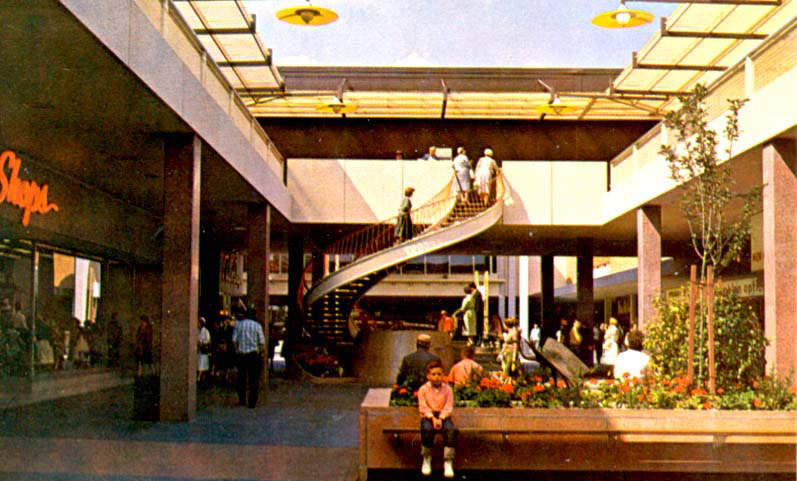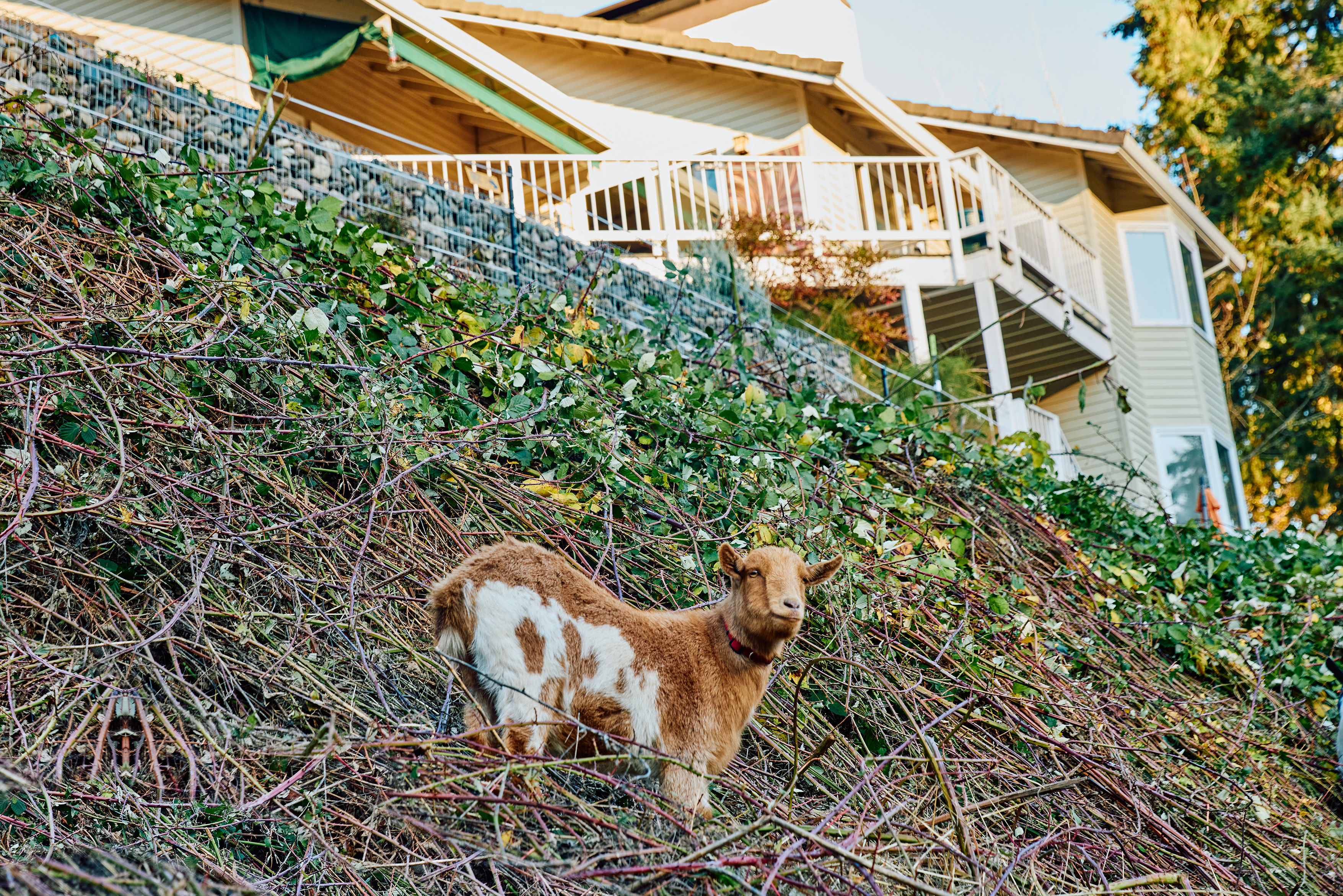Eco-Districts Are Us

Lloyd Center was a pioneer of shopping malls when it opened in 1960. The staircase pictured in this vintage photo cost $26,000, and was an amenity luring shoppers to the car-oriented alternative to downtown Portland.
Image: Courtesy of MCM League
Pioneers change over time, just as cities do. Not that long ago (when it opened in 1960), Lloyd Center was a pioneer: an open air, car-oriented shopping mall. Now it's the center of a new kind of pioneer, a fledgling EcoDistrict, poster child for the five Portland eco-districts leading the way into the green, energy-efficient, healthy and sustainable 21st century.
What is an eco-district? Good question. The recent EcoDistricts Summit held at Portland State University had the answers, and was itself a clear indication of how city planning – and mainstream real estate development – changes over time, to the benefit of us all. We live and learn, as individuals, societies, and cities, from our mistakes and from the knowledge we accumulate over time.
The Portland Sustainability Institute (PoSI) knows what an eco-district is. They're a leading proponent of this new term for the latest and greatest way to build a city today, and are helping defining it. (Actually, "eco-district" is not exactly a brand new nomenclature, but has taken about a decade to get any traction.) PoSI was the lead sponsor of the EcoDistricts Summit. Their website tells us that "an eco-district is a neighborhood or district with a broad commitment to accelerate neighborhood-scale sustainability. EcoDistricts commit to achieving ambitious sustainability performance goals, guiding district investments and community action, and tracking the results over time." Got it? It's a logical step forward from the connection planners, politicos and citizens made in the 1970s and '80s to connect land use and transportation policies. Now, health – of the planet and its people – and resources are up front considerations as well.
With the "eco" prefix added to its last name, the eastside shopping center-oriented Lloyd Center neighborhood is now the Lloyd EcoDistrict. What a long way that part of Portland has come since developer Ralph Lloyd started buying up properties (some 100 city blocks) in the early twentieth century so that he could eventually demolish the residential buildings, consolidate the parcels, and build a giant, car-oriented shopping center in 1960.
Ralph Lloyd's concept for the mall, when he broke ground in 1952, was that it would be an alternative to downtown Portland: safe, clean, and catering to the car (800 free parking spaces!). The car, after all, was the best and brightest way to get around, the wave of the future. He saw this alt-downtown as a "city within the city." The complex was to have included not just a shopping mall but also recreational facilities (a golf course or sports stadium), garden apartments, and a grand hotel.
Times changed, of course. Portland nixed a planned extension of its highway in the 1970s (the Mt. Hood Freeway that never came to be but lives on as a stub in our I-5 freeway system), and light rail was born instead. As the MAX lines were built in the 1980s and '90s, Lloyd Center marked the boundary of Portland's justly famous Fareless Square (recently itself nixed, due to budget shortfalls at the transit agency, Tri-Met).
Times are still changing. This year's EcoDistricts Summit (the third annual) brought participants from as far away as Sweden and Atlanta (Ellen Dunham-Jones and her arguments for Retrofitting Suburbia) and the other 'couv, Vancouver, BC. And from closer to home, the other four Portland pilot eco-districts: Gateway, Foster Green, South Waterfront, and South of Market (PSU). Unless money comes in for field trips to Sweden, Atlanta or BC, we'll likely be covering the action at these four Portland eco-districts soon.




